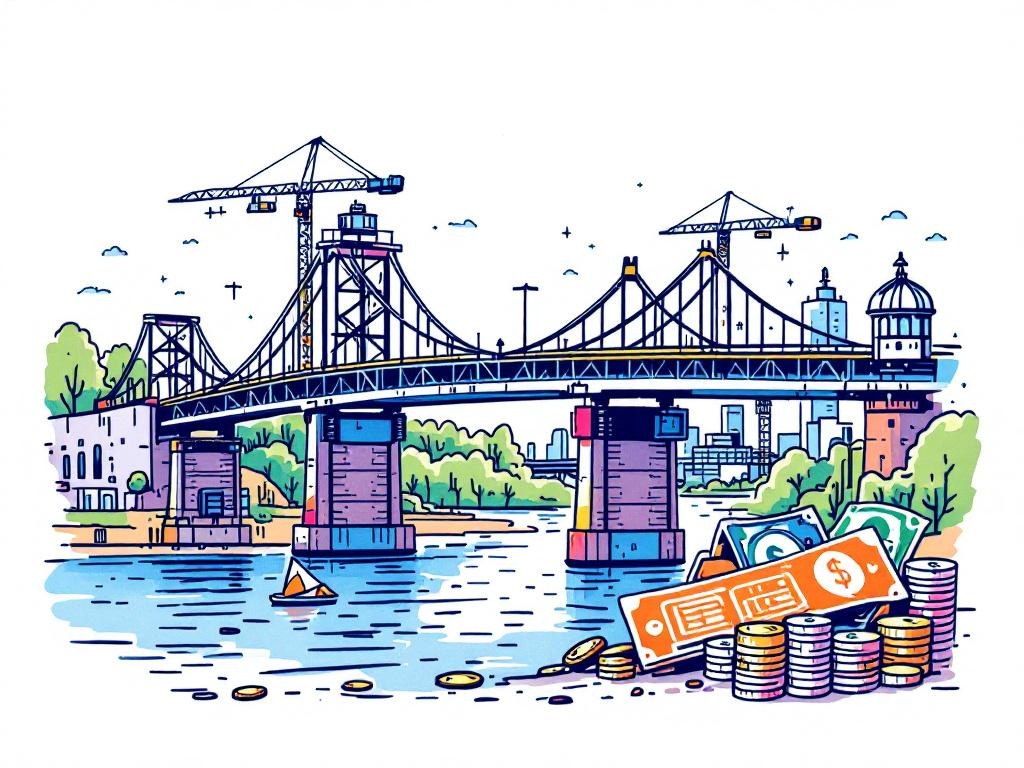Bridge Construction Market to Grow with Focus on Digital Twins and Sustainability

New York, Monday, 27 October 2025.
The bridge construction market is projected to grow significantly from 2025 to 2032, driven by digital twin technology and sustainable practices, necessitating adaptation by construction firms and policymakers.
Projected Market Growth
The bridge construction market is anticipated to expand from USD 1.21 trillion in 2024 to USD 1.87 trillion by 2032, achieving a compound annual growth rate (CAGR) of 5.62% [1]. This growth is driven by a plethora of factors, including the urgent need for infrastructure renewal and the integration of advanced technologies like digital twins [1].
Technological Advancements: Digital Twins
Digital twin technology, which allows for real-time simulations and enhanced data analytics, is revolutionizing the bridge construction industry. This technology facilitates better project management and operational efficiency, providing stakeholders with a powerful tool to predict maintenance needs and improve the lifespan of infrastructure projects [2].
Sustainability in Construction
The bridge construction sector is increasingly prioritizing sustainability, with a strong emphasis on integrating green building standards. This involves using recycled materials and implementing energy-efficient designs to meet stringent environmental performance standards set by regulatory bodies [1]. These practices are not only environmentally beneficial but also help companies achieve green certifications, which are becoming essential for competitive advantage [1].
Economic Implications and Policy Changes
The shift towards digital and sustainable construction practices is expected to have significant implications for the economy. The implementation of U.S. tariff changes in 2025 has affected global supply chains, prompting companies to reassess their sourcing and logistics strategies [1]. This environment of change necessitates that construction firms and policymakers adapt quickly to maintain competitiveness and comply with new regulatory requirements [1].